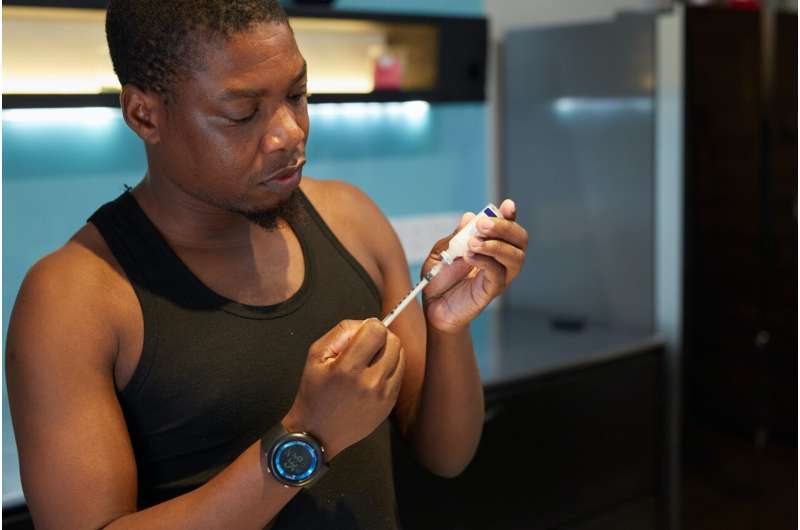This article has been reviewed according to Science X's editorial process and policies. Editors have highlighted the following attributes while ensuring the content's credibility:
fact-checked
trusted source
proofread
Study shows the major measure of diabetes is significantly higher in young Black patients

LSU Health New Orleans research led by Stuart Chalew, MD, Professor of Pediatrics at LSU Health New Orleans School of Medicine, has found that HbA1c, a major metric of diabetes management, is markedly higher in black youth compared to whites at any level of mean blood glucose. The findings are published online in the Journal of Diabetes Science and Technology.
"We found that HbA1c overestimates mean blood glucose levels in African-American patients with diabetes," notes Dr. Chalew. "This can lead to increased occurrence of hypoglycemia in African-American patients if HbA1c is primarily used to guide insulin management of diabetes."
The cross-sectional study was done using state-of-the-art continuous glucose monitoring (CGM) and confirms prior data from the LSU Health New Orleans pediatric endocrinology group in children with less sophisticated measures of glucose levels.
The research team gathered data from 118 otherwise healthy youth treated at Children's Hospital of New Orleans—33 black and 85 white patients with type 1 diabetes. Their mean age was 14.7, with an average age at diagnosis of 8.7 years, and who had diabetes for an average of 5.4 years. Fifty-one were male, and 67 were female. The researchers compared glycemic data from a factory-calibrated CGM with HbA1c taken from a venous blood draw on the day of the clinic visit. HbA1c was further evaluated by race, adjusting for other covariables of interest.
The authors write, "Using glucose metrics from CGMs, this study clearly documents that in addition to the well-known high correlation between HbA1c and mean blood glucose, there is a large clinically relevant and statistically significant difference in HbA1c between otherwise healthy black and white youth with type 1 diabetes which is independent of mean blood glucose and other covariates."
"The combination of mean blood glucose and race accounts for a very large amount of the variation in HbA1c in the study population. These data confirm findings from many prior reports of glucose-independent racial disparity in HbA1c, which relied on a limited number of blood glucose samples for comparison."
HbA1c has been widely used to predict diabetes complications because it is highly correlated with mean blood glucose levels and easily tested from a single blood sample.
"HbA1c also underestimates glucose time in range from continuous glucose monitors," adds Chalew. "Higher HbA1c at any given level of mean blood glucose in African-American patients potentially may contribute to increased long-term diabetes complications. Our results have important implications for the diagnosis and management of diabetes and preventing hypoglycemia."
According to the Centers for Disease Control and Prevention as of 2019, 28.7 million people of all ages—or 8.7% of the US population—had diagnosed diabetes, and 283,000 children and adolescents younger than age 20 years—or 35 per 10,000 US youths—had diagnosed diabetes. This includes 244,000 with type 1 diabetes. According to the Louisiana Department of Health, Louisiana was ranked ninth highest in the nation for adult diabetes in 2019, with a rate of 12.6%.
More information: Nicholas J. Christakis et al, Determination of Glucose-Independent Racial Disparity in HbA1c for Youth With Type 1 Diabetes in the Era of Continuous Glucose Monitoring, Journal of Diabetes Science and Technology (2023). DOI: 10.1177/19322968231199113




















